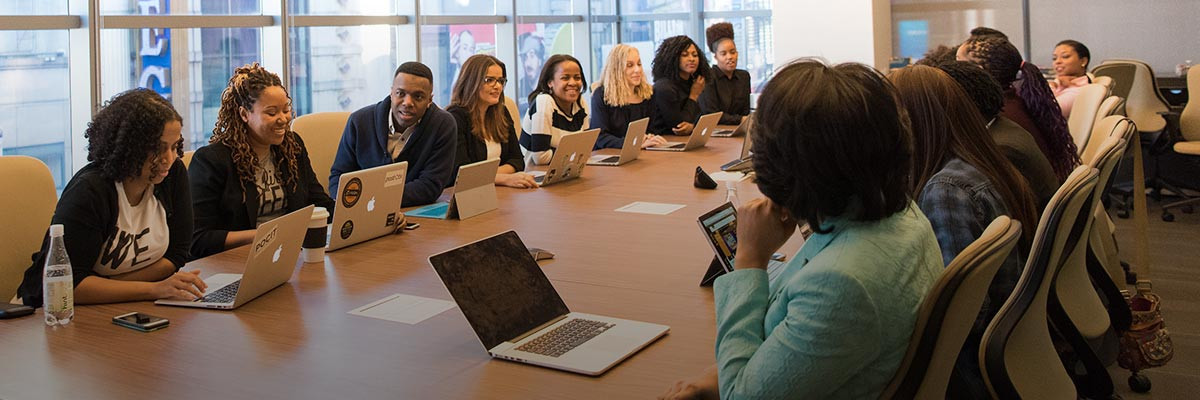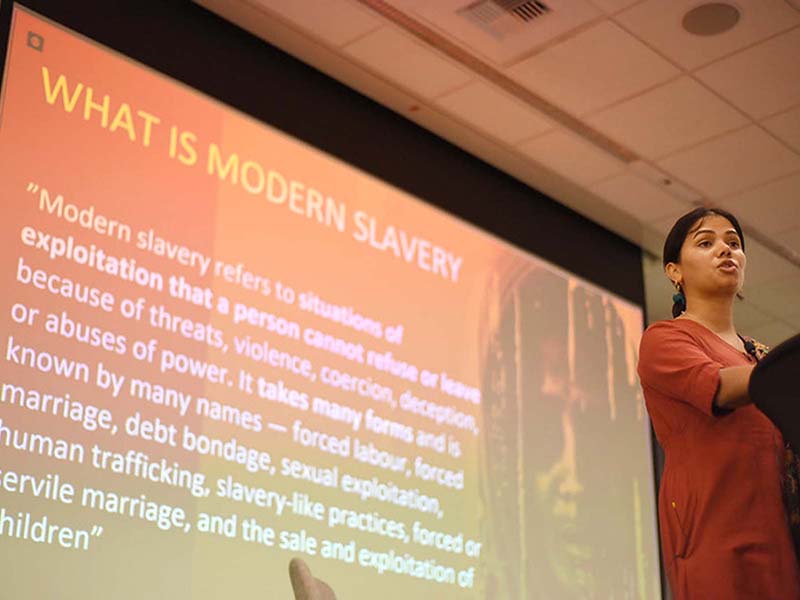
Photo by Christina @ wocintechchat.com on Unsplash
Authors
-
Annelise Thim
Former Associate Director, BSR
-
Victoria Reca
Former Manager, Equity, Inclusion, and Justice, BSR
Over the past two decades, women have made slow but steady progress toward workplace equality.
Globally, women’s share of board seats has increased, and the gender pay gap continues to gradually close. Over 3,800 companies around the world have signed up to the Women’s Empowerment Principles (WEPs) since their launch in 2010, and nearly a third of these companies have time-bound, measurable goals and targets to promote gender equality. Throughout this time, almost all corporate gender equality programming has worked under the assumption that a rising tide would raise all boats and that progress for some women would lead to progress for all. However, a more nuanced analysis shows that progress has not been felt evenly by all women.
- In the U.S., white women hold nearly four times as many Fortune 500 board seats than women of color.
- Research from the U.K. reveals that LBTQ+ women’s experience of sexual harassment and assault at work varied significantly depending on their ethnicity; 54 percent of lesbian, bisexual and trans Black and minority ethnic women reported unwanted touching compared to only 31 percent of white women.
- In France, Black, Arab, and Asian women are 2.5 times more likely to experience employment discrimination than white women.
Today, the COVID-19 pandemic—with its economic and social impacts—threatens to undo the progress toward women’s workplace equality, one of many considerations business must take into account as they plan for a post-COVID world. At the same time, the momentum of the Black Lives Matter movement has forced companies to look internally at how they perpetuate or dismantle racial discrimination. As more and more companies develop, enact, and expand women’s empowerment and diversity, equity, and inclusion (DEI) initiatives, business needs to understand women’s diverse and distinct experiences and undertake an intersectional approach.
One Size Does Not Fit All
Coined by Kimberlé Crenshaw in 1989, the term intersectionality recognizes that individuals experience discrimination based on multiple and intersecting identities, including race, religion, ethnicity, migrant status, sexual identity, sexual orientation, disability, age, or socioeconomic status. These individual characteristics “intersect” with one another and overlap contributing to unique experiences and may expose individuals to double or even triple discrimination grounds, making individuals more vulnerable in the workplace and in society.

Despite the growing awareness of intersectionality, companies have rarely applied this to their women’s empowerment efforts or wider DEI work. Instead, they tend to focus on one diversity characteristic, such as gender, race, or disability. This “either/or” mentality falsely pits the needs of underrepresented groups against one another and ignores the multiple and intersecting forms of discrimination and oppression that people face.
Current company ambitions and targets related to only one aspect of identity may leave some people out—and have the potential to disproportionately harm certain individuals in the workplace, albeit unintentionally. Furthermore, companies must recognize how ignoring intersectionality also misses opportunities for broader cultural change and policies that support a wider range of employees. Companies should learn from previous efforts, which focused narrowly on one issue, to see what works to promote greater diversity, equity, and inclusion for all.
Current company ambitions and targets related to only one aspect of identity may leave some people out—and have the potential to disproportionately harm certain individuals in the workplace, albeit unintentionally.
As companies think through developing or strengthening their DEI efforts, we recommend considering the following actions:
- Investigate intersectional data to capture the local context and challenges: Instead of looking at gender and race, for example, as two separate issues, look at them together wherever possible along with other characteristics such as disability or sexual orientation. Salesforce, for example, reports its workforce profile in the U.S. broken down by race and ethnicity and how that intersects with gender. Looking at intersectional data can help to ensure that certain groups are not falling through the cracks of the very programs designed to support them. Intersectional data should also be used to design targeted approaches for specific groups where needed.
- Use qualitative data to understand the diversity of experiences: Quantitative data tells part of but not the whole story. Regular and meaningful employee engagement can provide a more complete picture of employees’ lived realities. Surveys, town halls, safe spaces for discussion, or other feedback loops can give insights into the lived realities of employees both in and out of the workplace. It can also offer a more nuanced understanding of the impact of policies and programs on different employees that can then be used to adjust or revise your approach as needed.
- Integrate multiple lenses into ambitions and targets: Set targets that look at the intersectionality of individuals, such as gender and race, disability, sexual orientation, among others. For example, closing the gender pay gap is a crucial step to achieve gender equality, but it ignores other groups who may face pay discrimination. In 2020, white women in the US earn 81 cents for every dollar a white man earns; however, for American Indian, Alaska Native, Black, African American, and Hispanic women, this number is 75 cents. By expanding to a wider pay equity approach across diversity categories, such as race, ethnicity, and gender, companies can create a more equitable workplace for all employees.
- Include an equity dimension: Give all individuals equal opportunities based on their background and unique circumstances/challenges. This means reviewing how current programming can unintentionally leave people out. As mentioned above, time-bound, corporate commitments to promote women’s leadership have led to impressive gains for white women, but women of color have seen less progress.
- Foster a diverse and respectful culture: Through communication, employee awareness-raising events, sponsorship programs, and employee resource groups, companies are transforming the workplace culture and ensuring that employees are part of and driving this change. Samsung, for example, has hosted open forums for employees to explore and learn from the different identities that make up the companies, with the intersection of race and sexual orientation as banner topics.
At BSR, we are committed to working with our members and partners to design meaningful approaches to look at diversity, equity, and inclusion through an intersectional lens. Please reach out to our team for more information on this work or to get started on transforming DEI approaches at your company.
BSR’s latest sustainability insights and events straight to your inbox.
Topics
Let’s talk about how BSR can help you to transform your business and achieve your sustainability goals.







